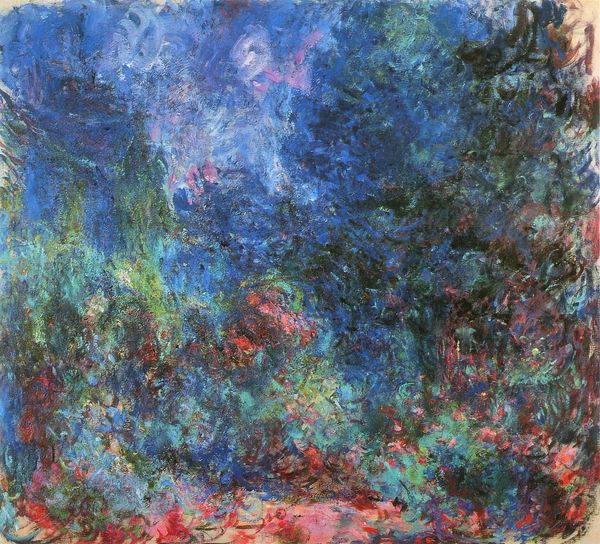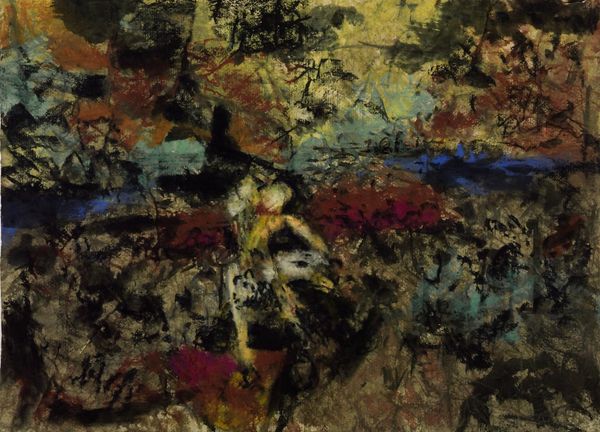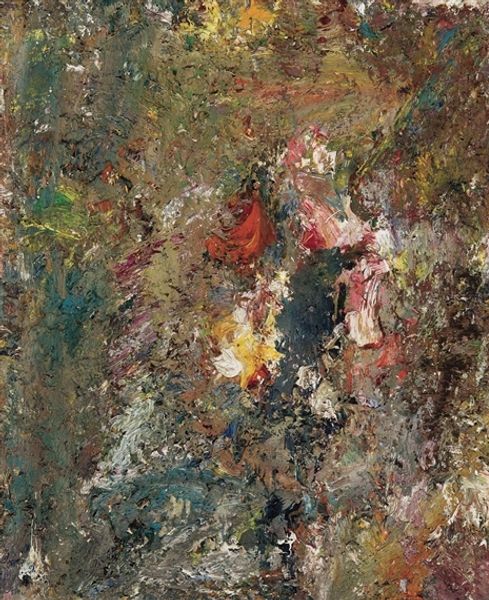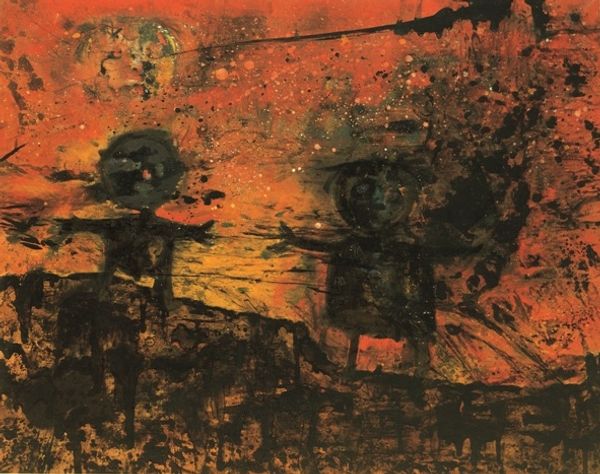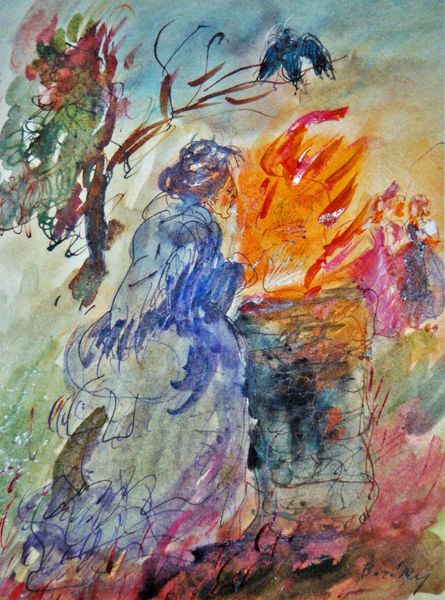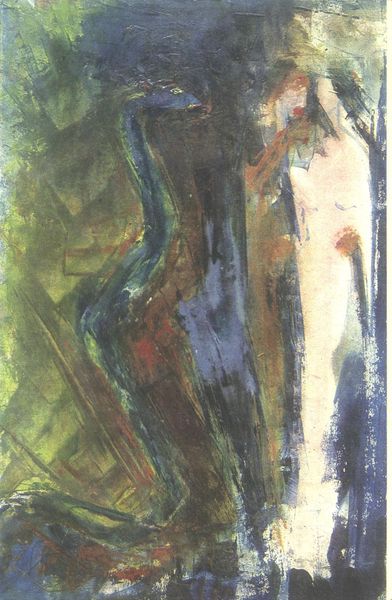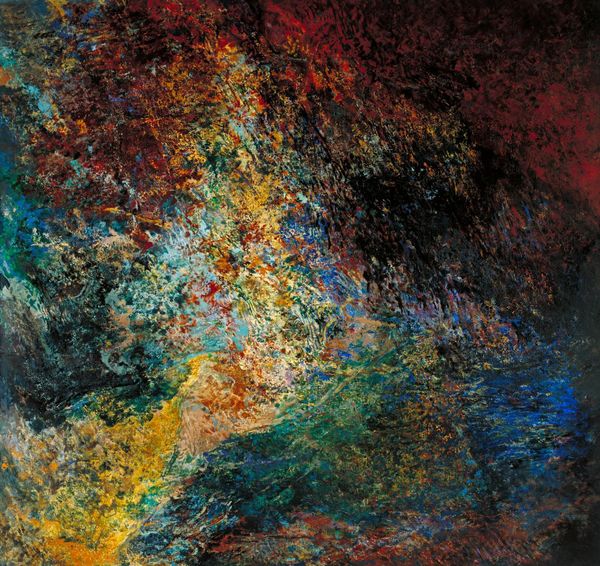
Copyright: Margareta Sterian,Fair Use
Editor: So, this is Margareta Sterian's "Illustration for V. Voiculescu's 'Last Shakespearean Sonnets'," created in 1982, using acrylic paint in what they call a 'matter-painting' technique. I'm immediately struck by its chaotic energy, almost violent, with those sharp, jagged strokes of paint. What do you see in this piece, and how do you interpret its connection to Shakespearean sonnets? Curator: What I find compelling is how this piece speaks to the turbulent undercurrents often present beneath the surface of even the most beautiful sonnets. Considering Sterian's socio-political context in 1980s Romania, this 'violent' abstraction might be interpreted as a coded rebellion. Does this expressive approach convey resistance or resilience, a grappling with constraints, not unlike how artists during oppressive regimes used abstraction to express what couldn't be said directly? How do you think that knowledge affects your interpretation of the artwork's 'chaotic energy?' Editor: That's a powerful point. Knowing the historical backdrop definitely adds another layer. The chaos could be a response to the constraints you mentioned, and it shifts the narrative from simply 'violent' to a visual representation of suppressed emotions and thoughts. Do you think that the specific choice of Shakespearean sonnets as inspiration is important in this context? Curator: Absolutely. Think about the sonnet form itself—rigid, structured, demanding. Sterian's abstraction could be seen as a deliberate disruption of that structure, an assertion of individual expression against imposed forms. The "Last Shakespearean Sonnets" suggest an ending, a finality. What if this illustration visualizes the struggle to create, to express, even when facing imposed silence or an impending end? The combination could imply the powerful intersection of literary history and lived reality within restrictive political landscapes. Editor: That connection hadn't occurred to me, but it makes perfect sense now. I see the painting not just as abstract expressionism, but as a testament to the resilience of artistic expression under duress. Curator: Precisely. Art often transcends mere aesthetics, becoming a profound dialogue with its time. I’m glad we explored the artwork this way!
Comments
No comments
Be the first to comment and join the conversation on the ultimate creative platform.


